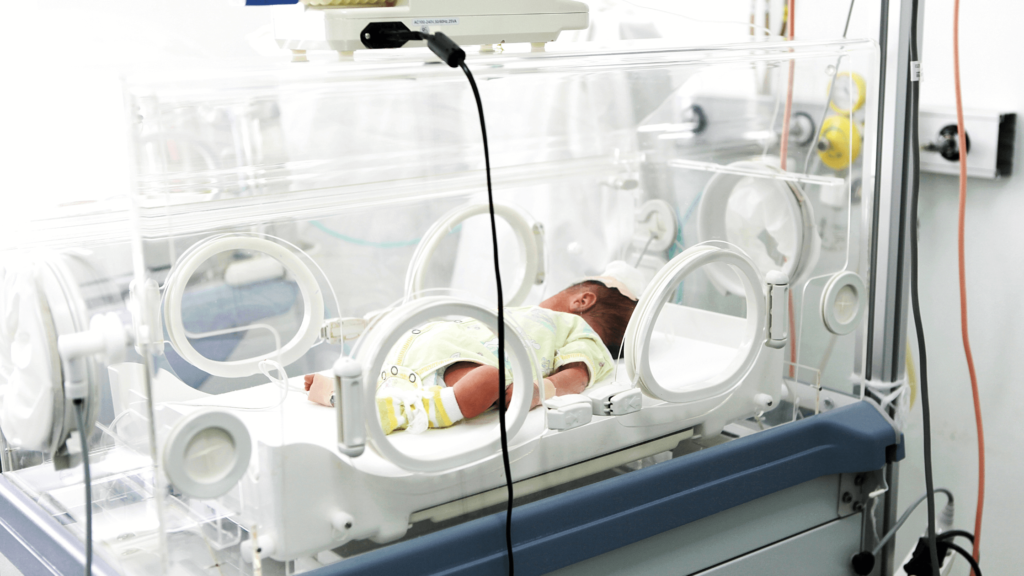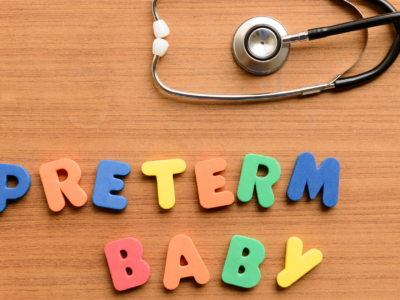
Every year, millions of families worldwide are confronted with the arrival of preterm babies, born before completing a full gestation.
These tiny warriors embark on a remarkable journey, challenging their resilience and leaving an indelible mark on the hearts of those who care for them. Preterm birth rates are rising, affecting approximately 15 million babies born preterm annually worldwide, indicating a global preterm birth rate of about 11%.
This blog post delves into the world of preterm babies, shedding light on their delicate beginnings and nurturing hope for a brighter future. We are hopeful you will find it helpful and enlightening.
Since the way we tend to define preterm delivery is quite customary. It is crucial to set a clear cutoff gestational age from which deliveries below it are described as preterm.
🧬 Definition
An infant born after the age of viability but before the completion of 37 weeks of pregnancy is referred to as a Preterm Baby. But here, the cutoff week for the age of viability is context-dependent. (In the US, it is above 20 weeks of gestation, whereas in developing nations like Ethiopia, it is taken to be above 28 weeks of pregnancy.)
And according to the American Academy of Pediatrics and the American College of Obstetricians and Gynecologists again, preterm babies will be further classified as follows:
📌 Extremely Preterm (those less than 28 weeks of gestation)
📌 Very Preterm (those between 28 weeks and 32 weeks)
📌 Moderately Preterm (those between 32 and 34 weeks)
📌 Late Preterm (from 34 to 37 weeks)
🧬 Of course, preterm babies tend to weigh smaller than term babies since they have not completed their intra-uterine growth fully.
And based on World Health Organization (WHO) on their birth weights again, preterm babies will be further classified to as
📌 Extremely Low Birth Weight (when birth weight is less than 1000 grams)
📌 Very Low Birth Weight (when birth weight is between 1000-1500 grams)
📌 Low Birth Weight (when birth weight is between 1500-2500 grams)
🧬 What could be the possible causes for preterm deliveries?
Most often, ascribing a single cause to a particular preterm delivery is difficult because multiple risk factors contribute to the termination of the pregnancy before term dates are completed.
But in general, we can broadly classify the causes to be as
📌 Elective preterm deliveries
📌 Spontaneous preterm deliveries
🧬 Elective Preterm Deliveries
Sometimes obstetricians might choose to terminate a pregnancy before the completion of the term date for specific obstetric indications (severe pre-eclampsia, uncontrolled gestational diabetes, active vaginal bleeding causing hemodynamic instability for the mother) to salvage the mother from an impending gross threat to her well-beingness.
🧬 Spontaneous Preterm Deliveries
In most cases, preterm deliveries might follow a particular speculated risk factor or happen spontaneously for unknown reasons. Of the known risk factors, some of them are mentioned next.
📌 Any history of preterm delivery in previous pregnancies (the most substantial known risk factor)
📌 If the current pregnancy is multiple pregnancies (59% of twin pregnancies and 98% of higher order pregnancies usually will deliver prematurely)
📌 If there is any history of abortion
📌 Low maternal body weight
📌 Having no antenatal care visits in the current pregnancy
📌 Maternal age (those whose age is less than 16 years and those older than 35 years)
📌 Maternal habits (if the mother is a cigarette smoker)
📌 Untreated infections of the genitourinary system (Bacterial Vaginosis)
📌 Any obstetrical co-morbidities (Like high blood pressure, Uncontrolled Gestational Diabetes )
📌 The socio-economic status of the mother (though the exact mechanism of it is not clearly delineated till now, it has been found that mothers from a lower socio-economic profile are at higher risk for preterm deliveries when they get pregnant.)

🧬 Complications of Preterm Deliveries
Preterm deliveries usually come up with lots of transient and longstanding health-related complications. And these complications are, in one way or another, related to the immaturity of the organ systems of preterm babies. And the rate of these complications is inversely associated with the gestational age (the higher the date, the closer it gets to the term date, the lower the difficulties will be.
Let us see them in the organ system’s order to make it plausible to approach.
📌 Cardiac
The most common cardiac pathology commonly seen in preterm babies is ‘Patent Ductus Arteriosus (PDA). Ductus Arteriosus is one of the fetal shunts that helps shunt the oxygenated blood from the high-resistance pulmonary vessels. But soon after birth, this shunt will close spontaneously in the first few hours. But in preterms, it might remain patent. And its incidence increases with increasing prematurity.
📌 Central Nervous System
- Poor sucking and swallowing reflexes
Due to the immature development of their nervous systems, preterms are more prone to poorly coordinated sucking and swallowing reflexes. They are at higher risk of aspirating their oral intake into their lungs and complicating with Aspiration Pneumonia. Feeding them with nasogastric tubes or parenteral feeding is highly recommended.
- Central Apnea
Newborns have an irregular breathing pattern, meaning they might panic in the middle of their regular breathing only to resume by themselves soon after. But pathological apnea is defined as when the cessation of breathing lasts for more than 15-20 seconds.
And preterm babies, in particular, are at a greater risk of experiencing central apnea secondary to the immaturity of the respiratory center in their brain.
- Intraventricular Hemorrhage
Ventricles are spaces within the brain parenchyma which serve as a tract for the flow of Cerebro-Spinal Fluids. And in preterm babies, the peri-ventricular germinal matrix is prone to bleeding. And it might even be complicated with periventricular white matter injury, leading to cerebral palsy and neurodevelopmental delays.
📌 Eyes
Retinopathy of Prematurity
The vascularization process of the retina would not get finalized till the completion of term dates. Preterm deliveries will interfere with the normal vascularization and angiogenesis of these retinal vessels, which could cause visual defects or even blindness.
📌 Gastrointestinal System
Feeding intolerance
Preterms have a smaller stomach and immature gastric and intestinal motility. These factors will impair their tolerance to oral and nasogastric tube feedings.

Necrotizing Enterocolitis
It is the most common surgical emergency in preterm babies. The three factors contributing to the development of Necrotizing Enterocolitis are enteral feeding, prematurity, and compromised blood flow to the gut. And usually, the newborns will present with bloody stool, distended and tender abdomen, and feeding intolerance.
📌 Infectious Complications
Preterms are found to be four times more likely to develop sepsis and meningitis as compared to that term neonates. And predisposing risk factors are reduced serum immunoglobulin, the presence of indwelling intravascular catheters and endotracheal tubes, and areas of skin breakdown which might serve as a portal of entry for pathogenic micro-organisms.
📌 Respiratory System
Preterm babies are more prone to develop respiratory distress for multiple reasons. The typical clinical presentations will be fast breathing, audible grunting, flaring of ala nasi, bluish discoloration of the lips, and retractions of the intercostal spaces. On top of other common etiologies, what is a peculiar cause of respiratory distress in preterm babies is Respiratory Distress Syndrome. It is secondary to surfactant deficiency which leads to alveolar collapse and atelectasis.
Some of these preterm babies will be weaned from respiratory support quickly. Still, others could develop chronic lung disease (Bronchopulmonary Dysplasia) and need prolonged respiratory help.
📌 Metabolic Complications
*Neonatal Hyperbillirubinemia (Neonatal Jaundice)
Decreased maturity of the hepatic-biliary system and decreased intestinal motility will play their part in developing neonatal jaundice on top of other risk factors shared with term babies.
📌 Temperature Regulation
Hypothermia
Preterm babies have exceptionally large body surface area to volume ratio (therefore when exposed to the external environment, they will rapidly lose their body heat and have difficulty maintaining their body temperature.
But all the complications mentioned above will not occur in all preterms despite the clinical conditions; some preterms might not have any.
Holistic Management of Preterm Babies
Emotional Support
- Parents should be encouraged to visit their newborns despite the baby’s clinical condition. Direct skin-to-skin contact (Kangaroo Care) is incredibly beneficial to maintain body temperature and fostering the bonding between the mother and their newborn babies.
- Feeding should be through an NG tube or directly through the Intravenous route until 34 weeks, and then after direct breastfeeding will be encouraged unless there is another contraindication. Also, supplementing calcium, phosphorus, and proteins for those with very low birth weight (Less than 1500 grams) for whom breast milk fortifiers or special preterm formula milk could be used as an alternative.
- Addressing all the medical complications with appropriate medical management before facilitating discharge from the NICU.
📌 Prevention
Even though it will be challenging to eliminate the risk of preterm deliveries, specific interventions help decrease the risk.
- Adjusting modifiable risk factors
- Starting antenatal care as early as possible once you know you are pregnant
- Arresting preterm labor with tocolytics
- Giving antenatal steroids to fasten the lung maturity 48 hrs before delivery.
Do you have a question? Or have an experience, share us in the comment below.



 Maternal Mental Health with Lediya Dumessa(PhD) የእናቶች የአዕምሮ ጤና
Maternal Mental Health with Lediya Dumessa(PhD) የእናቶች የአዕምሮ ጤና
An interesting read, thank you 😊
We’re are glad you find the preterm article interesting. 🙂